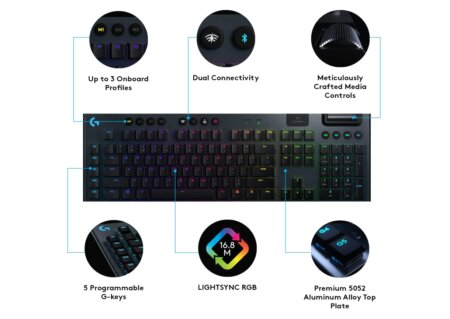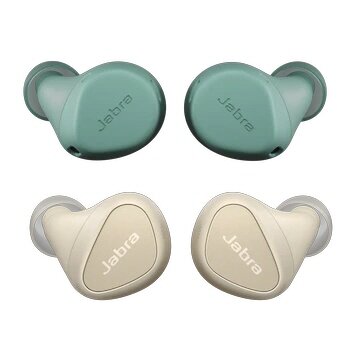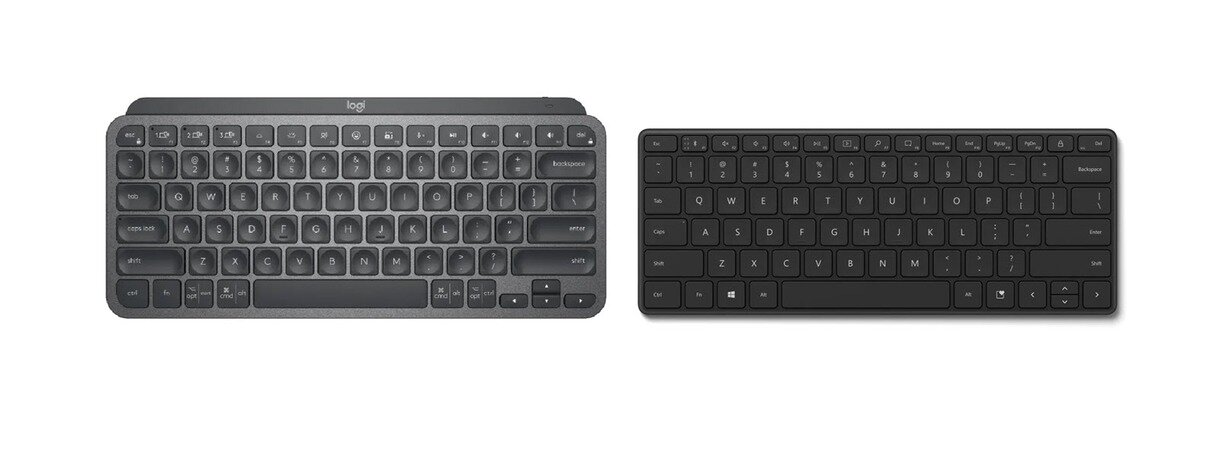This article reviews best design features for a 2-in-1 notebook tablet which will be better than all current devices in the market.
Each manufacturer configures their own 2-in-1 notebook differently. After reviewing several design and potential usage of such a device, we derived several design specifications that would be ideal for a 2-in-1 notebook. At this time, we have yet to find one that is able to fully comply with our wish list below. Some of these specifications could also be challenging.
Form, Fit and Function
The ideal 2-in-1 notebook is one that can be easily configured to become a tablet that can stand by its own. Using Surface Book as an example:
- Notebook Mode: The tablet is attached to the keyboard with the angles adjustable via a friction hinge.
- Tablet Mode: The tablet is detached from the keyboard and is used as a standalone “Touchpad” like the IPad.
The tablet mode for the Surface Book has an issue where the standalone “tablet” cannot stand on its own unless you attach it to a Cover Stand like the IPad.
But Microsoft already showed us that they have the best ideas by having a built-in stand behind their tablet in the Surface Pro series. So if they can combine these into one

When the screen (tablet) is attached to the keyboard, it should not require the back stand anymore. If they back stand is still require, it means there is a need for a flat surface support at the back. This will take up unnecessary table space.
As such, when the screen is attached to the keyboard, the angle can be adjusted via friction hinge at the attachment area. It should behave just like any notebook screen without the need for the rear stand.
Weight Budget
The overall target weight should be no more than 1.3kg. The weight budget of the tablet and keyboard should not exceed 650 grams each. As technology improves, perhaps we can hope to see an under 1kg device
Battery Power
The battery power has to be considered with the overall weight budget. Both the keyboard and tablet would need to have battery. However, the tablet component (screen) should be the one that needs the most power as it also contain the CPU. The keyboard can be designed lighter as it draws power from the tablet’s battery.
Pen or Stylus Storage
The touch pen should have a compartment to stow away the pen when not in use. In the above example, the pen can be located under the back stand, so that its hidden when the stand is closed.
IPad Pro’s first Apple Pencil was a horrific design as they failed to consider its storage, and the charging method was a joke. Since then, every manufacturer such as Lenova, Samsung have incorporated pen storage in some of their models.
Samsung designed a storage area for the S-Pen on the Cover at the rear of the Galaxy Tab S7.

Their Galaxy Tab A series still have the S-Pen compartment built into the main body.
Heat Issue
The tablet needs to stay cool when it is in the standalone mode, so that the user may carry it comfortably for note taking on the move. The IPad is excellent in terms of heat management.
Keyboard
The keyboard should be backlit and sturdy enough when the tablet is mounted on.
Conclusion
We have yet to see any notebook that is able to meet the above specifications.

When the screen (tablet) is attached to the keyboard, it should not require the back stand anymore. If they back stand is still require, it means there is a need for a flat surface support at the back. This will take up unnecessary table space.
As such, when the screen is attached to the keyboard, the angle can be adjusted via friction hinge at the attachment area. It should behave just like any notebook screen without the need for the rear stand.
Weight Budget
The overall target weight should be no more than 1.3kg. The weight budget of the tablet and keyboard should not exceed 650 grams each. As technology improves, perhaps we can hope to see an under 1kg device
Battery Power
The battery power has to be considered with the overall weight budget. Both the keyboard and tablet would need to have battery. However, the tablet component (screen) should be the one that needs the most power as it also contain the CPU. The keyboard can be designed lighter as it draws power from the tablet’s battery.
Pen or Stylus Storage
The touch pen should have a compartment to stow away the pen when not in use. In the above example, the pen can be located under the back stand, so that its hidden when the stand is closed.
IPad Pro’s first Apple Pencil was a horrific design as they failed to consider its storage, and the charging method was a joke. Since then, every manufacturer such as Lenova, Samsung have incorporated pen storage in some of their models.
Samsung designed a storage area for the S-Pen on the Cover at the rear of the Galaxy Tab S7.

Their Galaxy Tab A series still have the S-Pen compartment built into the main body.
Heat Issue
The tablet needs to stay cool when it is in the standalone mode, so that the user may carry it comfortably for note taking on the move. The IPad is excellent in terms of heat management.
Keyboard
The keyboard should be backlit and sturdy enough when the tablet is mounted on.
Conclusion
We have yet to see any notebook that is able to meet the above specifications.






